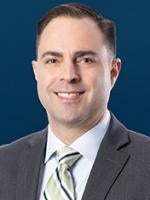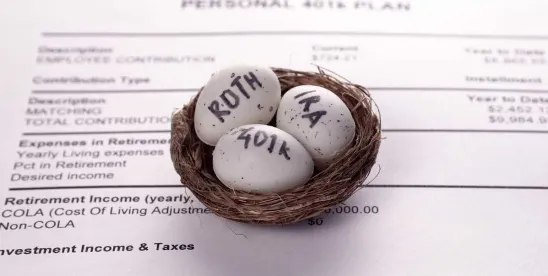The IRS issued Proposed Regulations last month which provide helpful clarity for employers on how to implement and comply with two new SECURE 2.0 provisions relating to catch-up contributions. "Catch-up contributions" are permitted additional salary deferrals to 401(k), 403(b) and governmental 457(b) plans by participants age 50 and older in excess of the standard deferral limit. Prior to the SECURE 2.0 Act, catch-up contributions could be made on a traditional (pre-tax) or—if permitted by the plan—Roth (after-tax) basis, and the same annually indexed limit ($7,500 for 2025) applied to all catch-up eligible individuals.
Under the SECURE 2.0 Act:
- Roth Catch-up Requirement. High earners (those with previous year FICA earnings exceeding $145,000, as indexed for inflation) may only make catch-up contributions on a Roth basis, while lower earners may choose to make either traditional or Roth contributions; and
- Super Catch-Ups. Participants—both high and low earners—who attain ages 60 to 63 in a taxable year are eligible for an increased catch-up contribution limit equal to the greater of: (i) $10,000; or (ii) 150% of the regular catch-up amount for the year ($11,250 for 2025).
Super Catch-Up Limit for Participants Ages 60 to 63
Whether the super catch-up provision is mandatory change has been the subject of much debate. The proposed regulations clarify that this is an optional design plan feature. However, pursuant to the universal availability requirement that applies to catch-up contributions, if any plan maintained by an employer offers the super catch-ups, all plans maintained by that employer must offer super catch-ups. While not entirely clear from the proposed regulations, this requirement likely applies on a controlled group basis.
High Earners May Only Make Roth Catch-Up Contributions
Much of the focus in the Roth catch-up space has focused on the application of the wage threshold for determining who is subject to the rule. Consistent with Notice 2023-62 (see our previous alert here), the proposed regulations confirm that only FICA wages count toward the threshold. Therefore, individuals who do not receive any FICA wages (such as a K-1 partners and certain governmental employees) are not subject to the Roth requirement, regardless of their earnings. In addition, wages from different employers will not be aggregated for purposes of this threshold, even if those employers are in the same controlled group.
The proposed regulations also clarify that the wage threshold is not prorated for the first year of employment. A new hire's first year wages must exceed the full FICA wage threshold for the participant to be subject to the mandatory Roth catch-up requirement the following year.
From an administrative standpoint, a plan may provide that high earners are deemed to have designated any catch-up election as a Roth election (a "deemed election")—whether the plan uses separate catch-up elections or a spillover design—so long as such participants are provided an opportunity to make a new election that differs from the deemed election, such as electing to suspend catch-up contributions altogether. This clarification will be very helpful to employers.
One key issue has been whether plans that fail ADP testing can recharacterize certain excess deferrals as catch-up contributions (which is a common strategy to improve testing results) if the deferrals were originally made on a traditional basis and need to be recharacterized as Roth catch-ups (which generally wouldn't occur until testing is conducted after the close of the plan year). The proposed regulations confirm that this is permissible and offer two correction methods:
- If certain timing requirements are met, the adjustment can be made on Form W-2 and the converted amounts can be included in the participant’s income for the year of deferral.
- Alternatively, the converted amounts can be treated as in-plan Roth conversions taxable in the year of conversion (presumably this method requires the plan to include an in-plan Roth conversion feature.)
If a plan does not offer a Roth contribution feature, it is not required to add that feature to its plan design to comply with the proposed regulations. Instead, it could permit lower earners to make catch-up contributions on a pre-tax basis, while high earners would be precluded from making any catch-up contributions at all. Given that higher earners are overwhelmingly the population that takes advantage of catch-up contributions, it seems likely that the practical effect of this rule will be to push more plans to implement Roth contributions.
Effective Date
The proposed regulations related to these new catch-up features generally apply to contributions in taxable years beginning after the date which is 6 months after the publication of final regulations. However, special delayed effective dates apply to collectively bargained plans. In addition, a plan is permitted to apply the rules in the proposed regulations applicable to Roth catch-up contributions for any tax year beginning after 2023, and the rules applicable to the increased super catch-up limit to any year beginning after 2024.
Recommended Actions
When deciding whether and how these features should be incorporated into a plan, plan sponsors should consider the practical implementation and administrative factors, such as coordination with payroll providers and recordkeepers.





 />i
/>i
